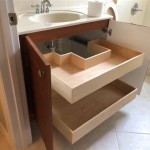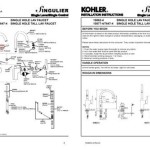How To Replace a Valve Stem on a Bathroom Sink
A leaky bathroom faucet can be a nuisance and a source of wasted water. Often, the culprit behind a dripping faucet is a worn-out valve stem. Fortunately, replacing a valve stem is a relatively straightforward task that most homeowners can tackle with a few basic tools. This article provides a step-by-step guide to replacing a bathroom sink valve stem, helping you save on plumbing costs and restore your faucet to its optimal functionality.
1. Gathering Necessary Tools and Materials
Before beginning the repair, assembling the necessary tools and materials is crucial. This preparation will streamline the process and prevent unnecessary interruptions. The required tools typically include a flathead screwdriver, Phillips head screwdriver, an adjustable wrench, pliers, and a basin wrench. A small container or bucket is also helpful for catching water. In terms of materials, the replacement valve stem, specifically designed for your faucet model, is essential. It's recommended to purchase a high-quality valve stem to ensure durability and longevity.
2. Turning Off the Water Supply
Shutting off the water supply is paramount before any plumbing work commences. Locate the shut-off valves under the sink. These valves control the flow of both hot and cold water to the faucet. Turn both valves clockwise until they are completely closed. Once the water is off, turn on the faucet to release any remaining water pressure in the lines. This will prevent water from spraying out when the valve stem is removed.
3. Removing the Faucet Handle
With the water supply off, the next step is removing the faucet handle. Most faucet handles are secured by a screw, often hidden beneath a decorative cap. Use a flathead screwdriver to carefully pry off the cap, revealing the handle screw. Using the appropriate screwdriver, usually a Phillips head, remove the screw. The handle should now lift off the faucet body. If the handle is stuck, gently wiggle it back and forth while pulling upwards. Avoid using excessive force, which could damage the faucet.
Some older faucets might have a different handle attachment mechanism, such as a setscrew located on the underside of the handle. If this is the case, use an Allen wrench to loosen and remove the setscrew.
4. Accessing and Removing the Valve Stem
After removing the handle, you'll see the valve stem assembly. This assembly is typically held in place by a packing nut. Use an adjustable wrench to loosen and remove the packing nut. Turn the nut counterclockwise to loosen it. Once the packing nut is removed, the valve stem can be extracted. In some cases, the valve stem might be difficult to remove. A valve stem puller tool can be helpful in these situations. Alternatively, gently gripping the valve stem with pliers and wiggling it back and forth can help loosen it.
5. Installing the New Valve Stem
With the old valve stem removed, carefully examine the o-rings and washers on the new valve stem to ensure they are properly seated. Apply a small amount of plumber's grease to the o-rings to ensure a watertight seal and smooth operation. Insert the new valve stem into the valve body, ensuring it is fully seated. Thread the packing nut back onto the valve stem and tighten it with the adjustable wrench. Avoid overtightening, which could damage the valve stem or the faucet body.
6. Reassembling the Faucet
Once the new valve stem is securely in place, reassemble the faucet handle. Align the handle with the valve stem and reinsert the handle screw. Tighten the screw securely, but avoid overtightening, which could strip the screw threads or crack the handle. Replace the decorative cap, snapping it firmly into place.
7. Testing for Leaks
After reassembling the faucet, slowly turn the water supply back on. Observe the faucet carefully for any signs of leaks. Check both the hot and cold water lines. If any leaks are detected, tighten the packing nut or check the o-rings on the valve stem for proper seating. If leaks persist, it may be necessary to disassemble the faucet and re-examine the installation. Running the faucet for a few minutes allows you to observe the functionality of the new valve stem and ensure proper operation.
Replacing a bathroom sink valve stem is a manageable task that can save money and prevent water waste. By following these steps carefully and using the appropriate tools, homeowners can successfully complete this repair and restore their faucet to proper working order.

How To Replace A Dripping Leaking Bathroom Faucet Stem

How To Fix A Leaking Faucet Handle Replacing Stem Assembly

How To Replace Valve Seats The Home Depot

Kohler Wide Spread Taboret Lavatory Faucet Stems Replaced

How To Replace Leaky Cartridges In A Bathroom Faucet Repair

How To Change The Stems Seats And Springs In A Delta Faucet

How To Replace A Dripping Leaking Bathroom Faucet Stem

How To Fix A Leaking Bathtub Faucet Diy Family Handyman

How To Replace A Faucet Valve Stem Doityourself Com

Help Id Ing Tub Faucet And Tips To Remove Valve Stem Doityourself Com Community Forums







